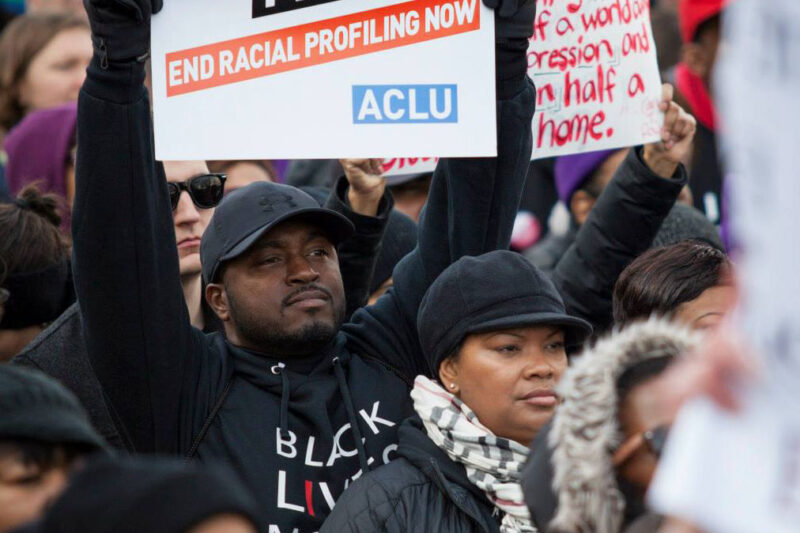
How long can we expect to see new reports and videos of unarmed Black men being shot by police in incidents all across the country? Aspects of two of the most recent shootings in Tulsa, Oklahoma, and North Charleston, South Carolina, suggest some answers to the question, and the answers do not bode well.
The videotaped shootings of Eric Harris in Oklahoma and Walter Scott in South Carolina both depict the killing of unarmed Black men as a result of what appears to be an unjustified and unnecessary use of force. Scott was hit five times in the back while running slowly away from the police officer who ended his life, while the fatal shot to the back of Eric Harris came from a volunteer reserve deputy who had been allowed to carry a badge and gun after he made substantial donations to the Tulsa sheriff. Both cases merit immediate and thorough investigation, and appropriate steps should be taken to prosecute any police officer determined to have engaged in illegal conduct in connection with the deaths of Mr. Scott and Mr. Harris.
But looking at each incident in its entirety suggests that the problems run far deeper than mere accidents or miscalculations that occur in a split second under extreme stress. Instead, both cases demonstrate a distinct callousness and insensitivity, which suggest that the stage for these killings may have been set long before shots were actually fired.
After shooting Walter Scott five times, Officer Michael Slager showed no concern for ScottÔÇÖs distress. Instead, Slager approached the dying man, who lay face down in the grass only to handcuff him, walk calmly away, and then retrieve something that the officer later dropped near his lifeless body. After being shot by Tulsa volunteer deputy Bob Bates, Eric Harris, handcuffed and crying in pain, was told to ÔÇ£shut the fuck upÔÇØ by one of the arresting officers, who, adding insult to injury, responded to the wounded manÔÇÖs statement that he was having trouble breathing with, ÔÇ£Fuck your breath.ÔÇØ
It is unclear whether that officer recognized HarrisÔÇÖ statement as an eerie echo of Eric GarnerÔÇÖs repeated complaint of ÔÇ£I canÔÇÖt breathÔÇØ before his death from a chokehold at the hands of the NYPD last summer ÔÇö a statement later adopted as a rallying cry by those protesting the illegal use of force by police. Whether the officerÔÇÖs crude and insensitive comment was a broader rebuke to the idea that #blacklivesmatter, or just a reaction to the instant circumstances, there can be no doubt that he displayed a fundamental disregard for the humanity of the person who had just been wrongfully shot by his volunteer colleague.
Sadly, this gross disregard for Black life is not limited to these two shootings, nor is it limited to the Black shooting victims themselves. Instead, the families of the victims, as well as members of the communities from which they come, are often treated disrespectfully and with unnecessary physical force by police. After police shot and killed 12-year-old Tamir Rice while he was playing with a toy gun, officers forcibly tackled RiceÔÇÖs 14-year-old sister, who was still in shock over her brotherÔÇÖs shooting, and later threatened to arrest his mother, who was understandably distraught over the news of her sonÔÇÖs shooting.
Nor should the blame be placed solely with the individual police officers involved in these incidents. In these and many other cases in which officers shot and killed Black men, law enforcement agencies have responded by releasing information about the victimsÔÇÖ past criminal records, intended to besmirch the characters of those on the receiving end of their brutality ÔÇö as if the fact of a victimÔÇÖs prior involvement with the criminal justice system justified the illegal use of force by people sworn to uphold the law. The release of such information and the publication of slanted stories about these crime victims by the law enforcement agencies who may later be responsible for investigating the same crimes not only unfairly taints the victims, but it also reinforces the overt and implicit biases that depict Black men as being violent people who deserve whatever violence has been perpetrated against them.
To their credit, the North Charleston Police Department and mayor both arrested the offending police officer and reached out in sympathy to Mr. ScottÔÇÖs family. Likewise, the Tulsa County district attorney has charged the volunteer deputy who shot Eric Harris with manslaughter, providing hope that some measure of justice will be served. These commonsense actions and gestures are the first small steps in addressing a police culture of fear and bias that is perpetuated by the too common failure to hold accountable police who use excessive force against people of color. But if we fail to follow through and eliminate that culture, it will assure that the stories of police violence now filling the media will continue on a loop without end. And with every one of these stories there comes another life ended, another set of family and friends in grief, another community torn apart, and another tragedy that could have been prevented.

